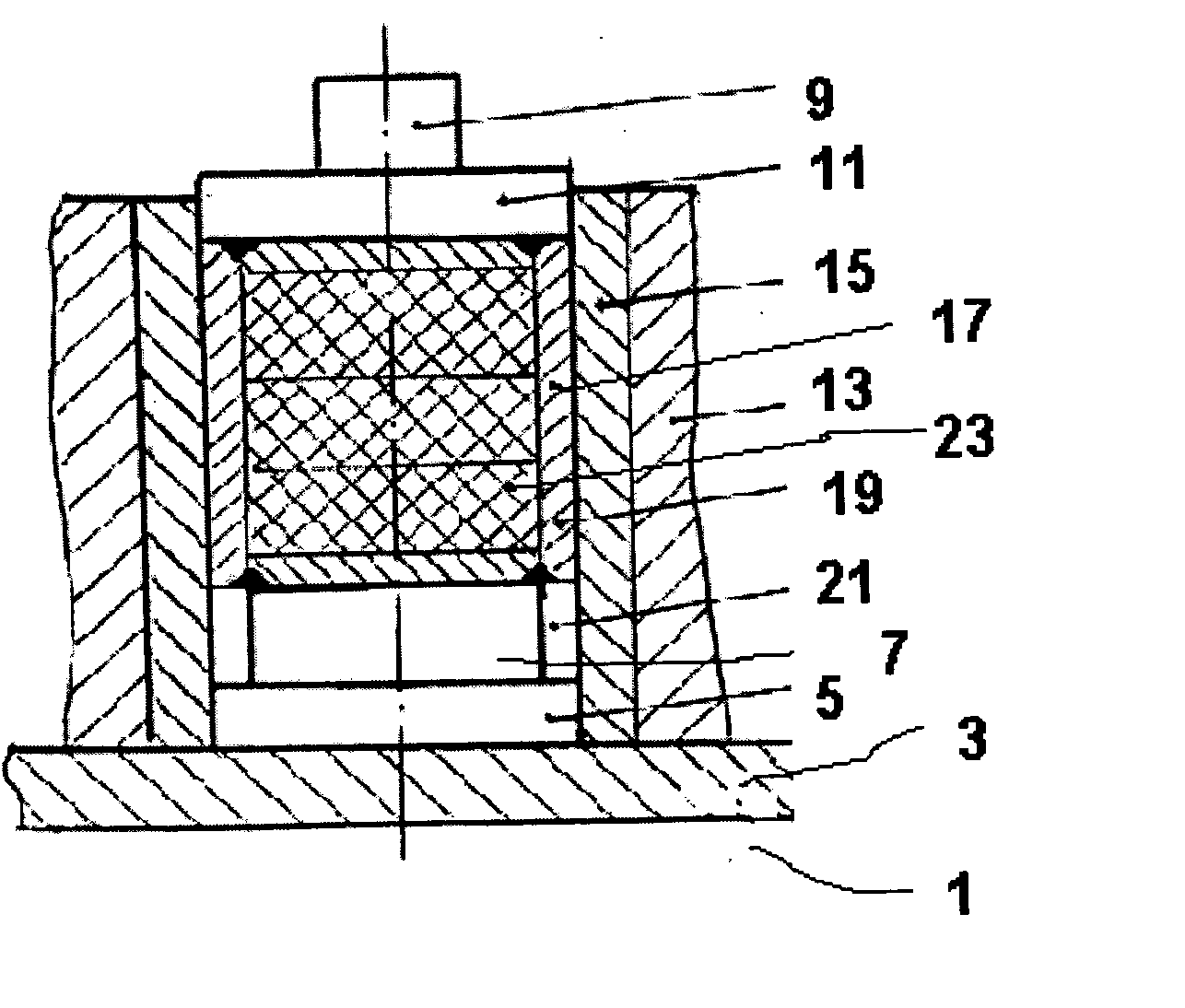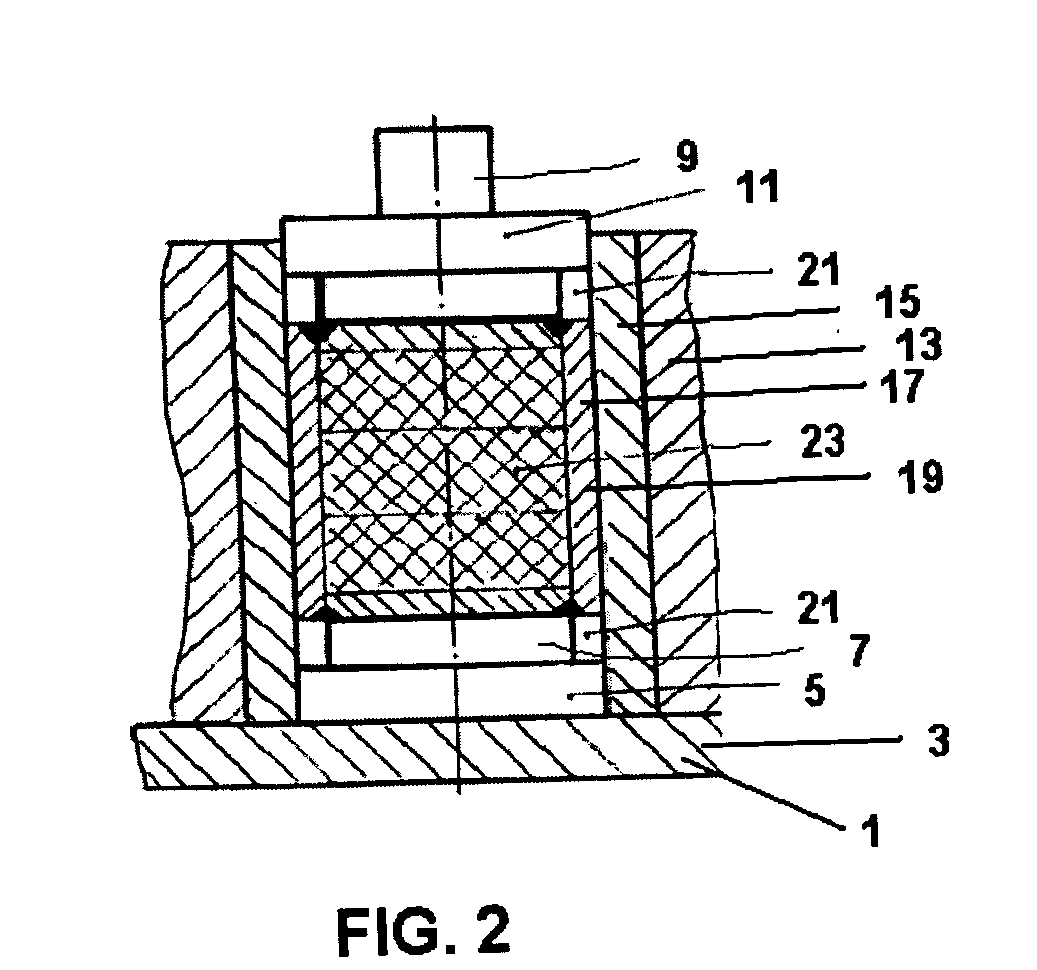Method and apparatus for forming billets from metallic chip scraps
a technology of metal chips and billets, which is applied in the field of metal chip recycling, can solve the problems of large volume of chip scrap for recycling, adverse environmental impact without accompanying economic benefits, and contamination by foreign particles of other alloys,
- Summary
- Abstract
- Description
- Claims
- Application Information
AI Technical Summary
Problems solved by technology
Method used
Image
Examples
Embodiment Construction
[0034] Metal chip scrap of titanium alloy BT5 grade was crushed into particles with particle size ranging from 5-20 mm. Contaminants and foreign particles were removed by rinsing in solution, comprised of 30-35 g / l of soda ash and 15-20 g / l of trisodium phosphate at the temperature of 60-80 deg C.; followed by rinsing in water, drying and finally subjected to magnetic separation. The particles were pressed to form cylindrical shape briquettes having a diameter of 150 mm and height of 100 mm, with relative density of 0.6. The briquettes were placed into a capsule manufactured of low-carbon sheet steel CT3 grade. Wall thickness of the capsule cowling and butt-end covers was 2.0 mm, capsule height was 300 mm (without taking thickness of covers into consideration).
[0035] After sealing-in, (by means of butt-end covers welded on), the capsule was heated in gas-furnace to the temperature of 1080 deg C. for 1.5-2 hours, and was kept at said temperature for 1 hour for temperature equalizatio...
PUM
| Property | Measurement | Unit |
|---|---|---|
| Fraction | aaaaa | aaaaa |
| Time | aaaaa | aaaaa |
| Size | aaaaa | aaaaa |
Abstract
Description
Claims
Application Information
 Login to View More
Login to View More - R&D
- Intellectual Property
- Life Sciences
- Materials
- Tech Scout
- Unparalleled Data Quality
- Higher Quality Content
- 60% Fewer Hallucinations
Browse by: Latest US Patents, China's latest patents, Technical Efficacy Thesaurus, Application Domain, Technology Topic, Popular Technical Reports.
© 2025 PatSnap. All rights reserved.Legal|Privacy policy|Modern Slavery Act Transparency Statement|Sitemap|About US| Contact US: help@patsnap.com



